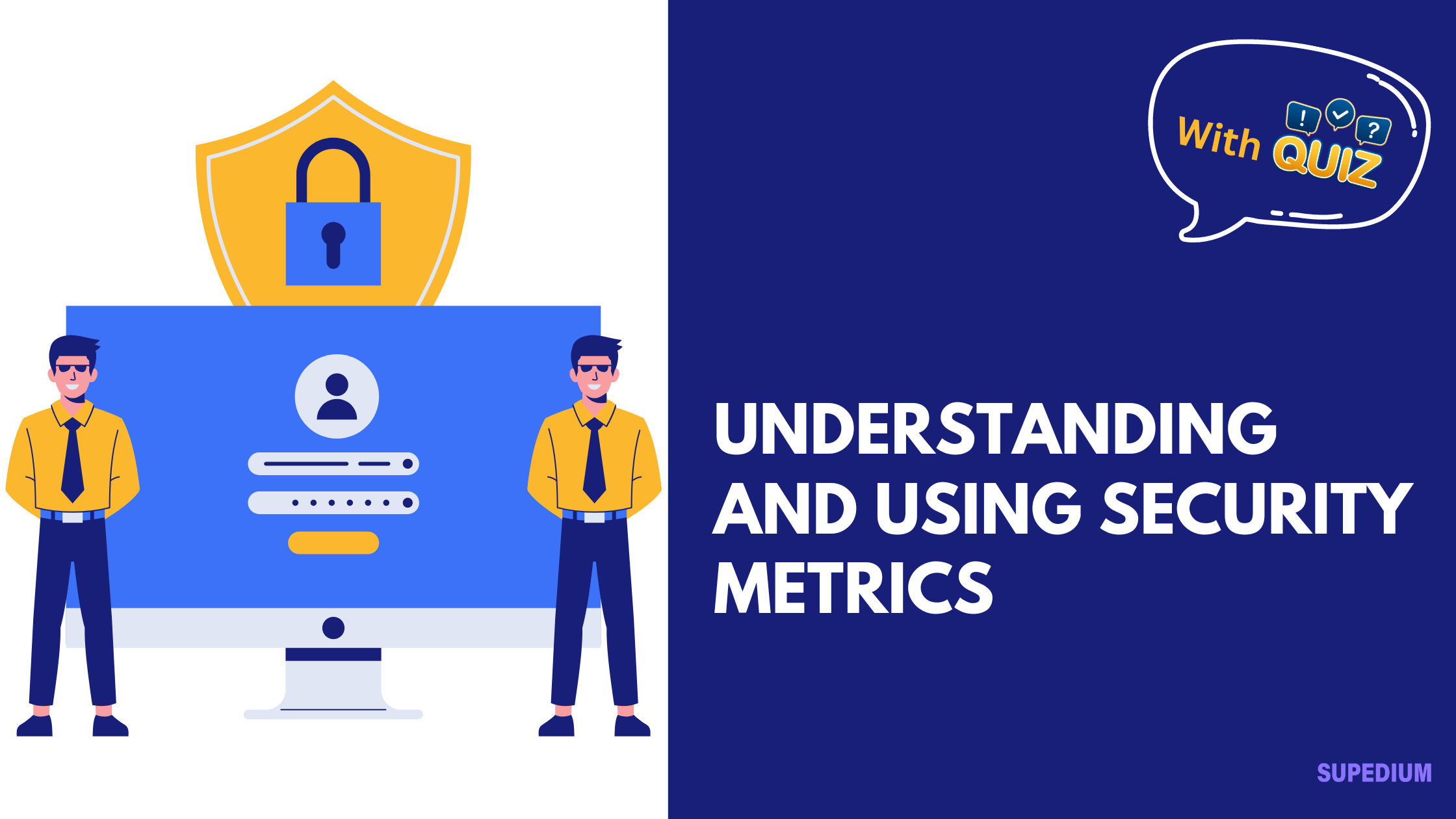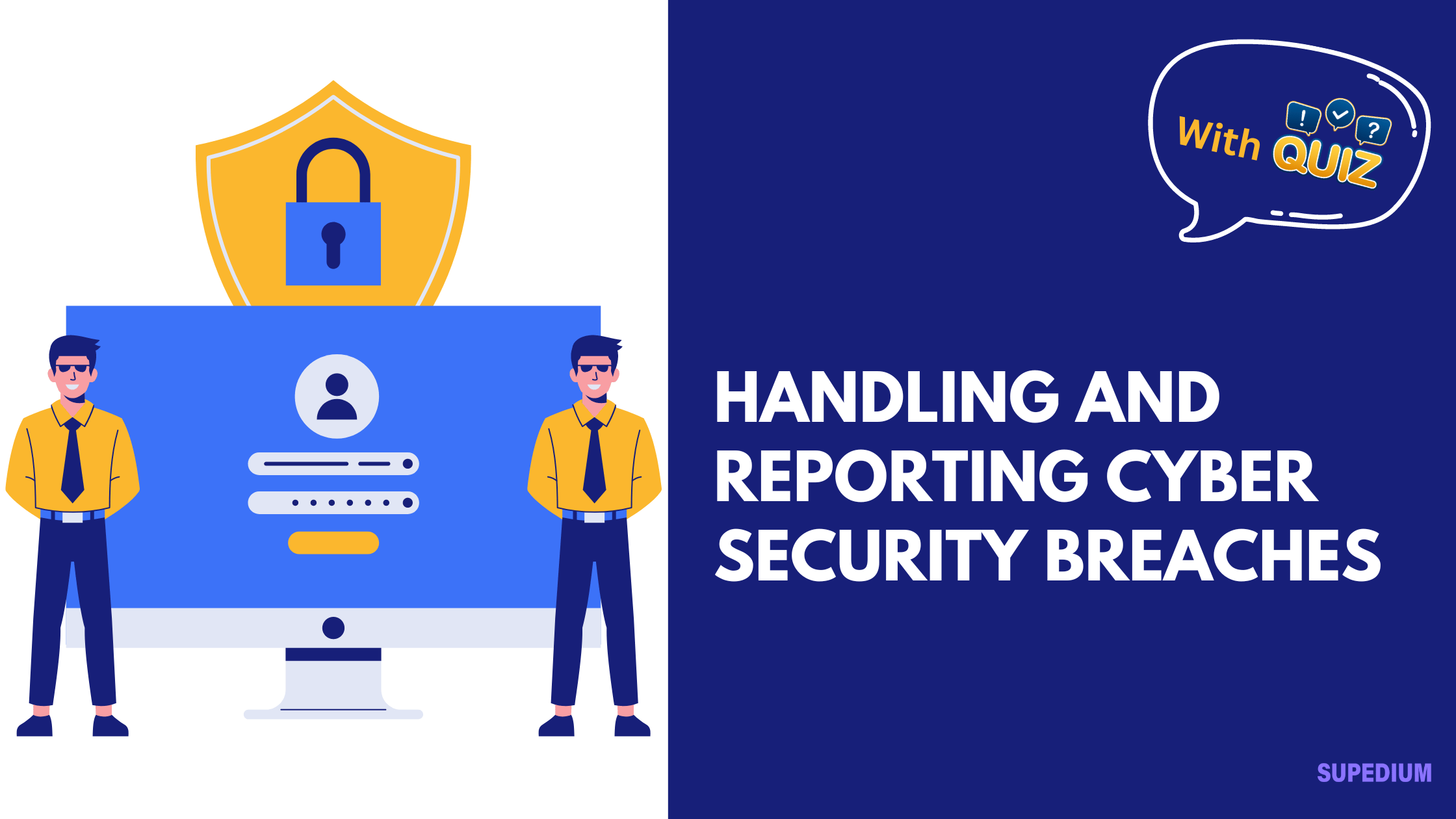Table of Contents
![]()
In today’s complex and rapidly evolving digital landscape, security metrics play a critical role in protecting organizations from cyber threats and managing risk. This article explores the concept of security metrics, their types, development, implementation, and the challenges associated with them.
Introduction
Definition of Security Metrics
Security metrics are quantitative measures used to assess and manage an organization’s security posture. They provide insights into the effectiveness of security controls, the status of vulnerabilities, incident response performance, and overall risk management. By leveraging these metrics, organizations can better understand their security landscape, make informed decisions, and improve their defenses.
Purpose of Security Metrics
The primary purpose of security metrics is to monitor and evaluate security performance. They help organizations:
- Monitor Security Performance: Track the effectiveness of security measures and identify areas for improvement.
- Assess and Manage Risk: Evaluate potential threats and vulnerabilities to mitigate risks.
- Report and Ensure Compliance: Provide necessary documentation and evidence for regulatory compliance and internal audits.
Types of Security Metrics
Security metrics can be categorized into several types based on their focus and application:
Operational Metrics
Operational metrics are crucial for evaluating the effectiveness of day-to-day security operations.
- Incident Response Metrics
- Time to Detect (TTD): Measures how long it takes to identify a security incident after it occurs. A lower TTD indicates a more effective detection capability.
- Time to Respond (TTR): Tracks the time taken to initiate a response after detecting an incident. Faster response times can limit the damage caused by security incidents.
- Time to Contain (TTC): Measures the duration required to contain an incident to prevent further spread. Effective containment minimizes the impact of security breaches.
- Time to Recover (TTR): Assesses the time needed to restore normal operations following an incident. Rapid recovery reduces downtime and operational disruption.
- Threat Detection Metrics
- Number of Detected Threats: Tracks the volume of threats identified by security systems. An increase in detected threats can indicate either more effective detection or a rising threat landscape.
- False Positive/Negative Rates: Measures the accuracy of threat detection systems. High false positive rates can lead to alert fatigue, while high false negative rates may indicate missed threats.
- Detection Coverage: Assesses the extent to which threat detection systems cover the organization’s network and assets. Comprehensive coverage ensures that more potential threats are identified.
Vulnerability Metrics
Vulnerability metrics focus on assessing and managing security weaknesses within an organization’s systems.
- Vulnerability Assessment Metrics
- Number of Vulnerabilities Identified: Indicates the total count of vulnerabilities discovered during assessments. A higher number suggests a need for improved security measures.
- Severity of Vulnerabilities: Evaluated using the Common Vulnerability Scoring System (CVSS) or similar scoring systems. Severity scores help prioritize remediation efforts.
- Remediation Times: Tracks the duration required to address and fix identified vulnerabilities. Shorter remediation times are indicative of a more responsive vulnerability management process.
Compliance Metrics
Compliance metrics are used to ensure adherence to regulatory requirements and industry standards.
- Regulatory Compliance
- Compliance Status: Measures the organization’s adherence to regulations such as GDPR, HIPAA, or PCI-DSS. It reflects the effectiveness of compliance efforts.
- Number of Audit Findings: Tracks the findings from compliance audits. Fewer findings typically suggest better compliance.
- Compliance Audit Scores: Represents the results of formal compliance assessments. Higher scores indicate a stronger compliance posture.
Performance Metrics
Performance metrics evaluate the effectiveness of security controls and the impact on system resources.
- Security Controls Performance
- Effectiveness of Firewalls, IDS/IPS: Measures the success of implemented security controls in detecting and mitigating threats.
- Patch Management Effectiveness: Assesses the timeliness and completeness of applying security patches. Effective patch management reduces vulnerability exposure.
- Resource Utilization
- System Performance Impacts: Evaluates how security measures affect system performance. Ensuring minimal performance degradation is crucial for maintaining operational efficiency.
- Resource Consumption: Tracks the usage of resources (e.g., CPU, memory) by security systems. Efficient resource utilization prevents system overload.
Developing Effective Security Metrics
Aligning with Business Objectives
Effective security metrics must align with organizational goals. Understanding the business’s objectives helps tailor metrics to support overall success. For instance, if a business aims to enhance customer trust, metrics related to data protection and incident response may be prioritized.
Defining Key Performance Indicators (KPIs)
Key Performance Indicators (KPIs) are specific, measurable metrics that reflect the success of security initiatives. Clear KPIs should be established to measure performance against security goals. For example, a KPI could be reducing the average time to detect threats by 20% within a year.
Data Collection and Analysis
Accurate data collection is essential for reliable metrics. Organizations should identify relevant data sources, ensure data accuracy, and analyze trends and patterns. Analyzing data helps identify areas of improvement and track progress over time.
Implementing Security Metrics
Tools and Technologies
Several tools and technologies can assist in implementing security metrics:
- Security Information and Event Management (SIEM) Systems: Aggregate and analyze security event data to provide insights into potential threats.
- Vulnerability Scanners: Identify and assess vulnerabilities in systems and applications.
- Compliance Management Tools: Help track and manage regulatory compliance requirements.
Integration into Security Operations
Metrics should be integrated into daily security operations. This involves using metrics to inform decision-making, such as prioritizing incident response efforts or focusing on high-risk vulnerabilities.
Communicating Metrics to Stakeholders
Effective communication of metrics is crucial for stakeholders at different levels. Reporting formats may include dashboards for executives, detailed reports for technical teams, and summaries for compliance auditors. Tailoring communication ensures that metrics are actionable and relevant to the audience.
Evaluating and Improving Security Metrics
Continuous Improvement
Security metrics should be regularly reviewed and updated to reflect changes in the threat landscape and organizational priorities. Continuous improvement helps maintain relevance and effectiveness.
Feedback and Adjustments
Gathering feedback from stakeholders is essential for refining metrics. Adjustments based on performance and effectiveness ensure that metrics remain aligned with organizational goals and security needs.
Challenges and Considerations
Data Privacy and Security
Collecting and analyzing metrics must be conducted without compromising data privacy and security. Handling sensitive information requires adherence to data protection regulations and best practices.
Balancing Metrics and Usability
Organizations must avoid metric overload by focusing on the most relevant and actionable metrics. Balancing the volume of metrics with usability ensures that they provide meaningful insights without overwhelming users.
Case Studies and Examples
Real-world Examples
- Improving Incident Response Times: A company that implemented enhanced threat detection and response systems significantly reduced its average incident response time from hours to minutes, minimizing the impact of security breaches.
- Vulnerability Management Program: Another organization used vulnerability metrics to prioritize and address critical vulnerabilities, resulting in a substantial reduction in the number of high-risk vulnerabilities over six months.
Lessons Learned
Common pitfalls include failing to align metrics with business objectives or neglecting regular reviews. Best practices involve setting clear KPIs, integrating metrics into security operations, and continuously refining metrics based on feedback and evolving threats.
Conclusion
Security metrics are a vital component of a comprehensive security strategy. They provide insights into security performance, risk management, and compliance. By developing, implementing, and continuously improving security metrics, organizations can better protect their assets, manage risks, and ensure compliance with regulations.
Future Trends in Security Metrics
Emerging technologies such as artificial intelligence and machine learning are expected to enhance security metrics by providing more sophisticated analysis and predictive capabilities. As threats evolve, metrics will need to adapt to address new challenges and maintain effective security postures.






Be the first to comment